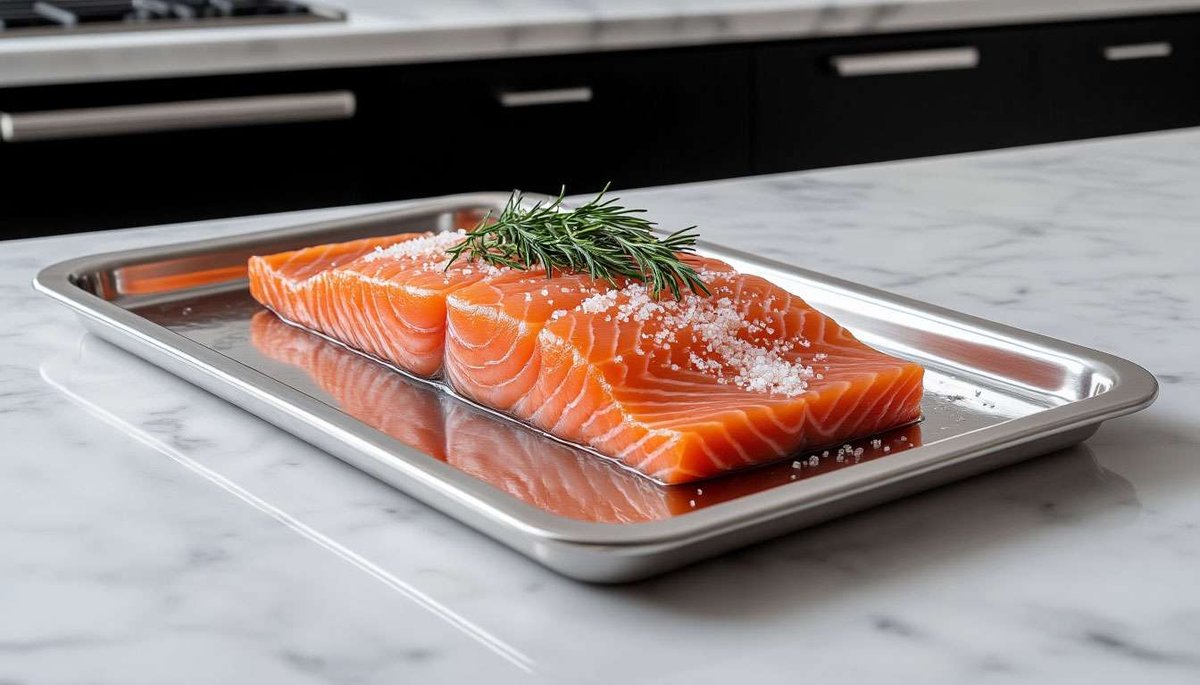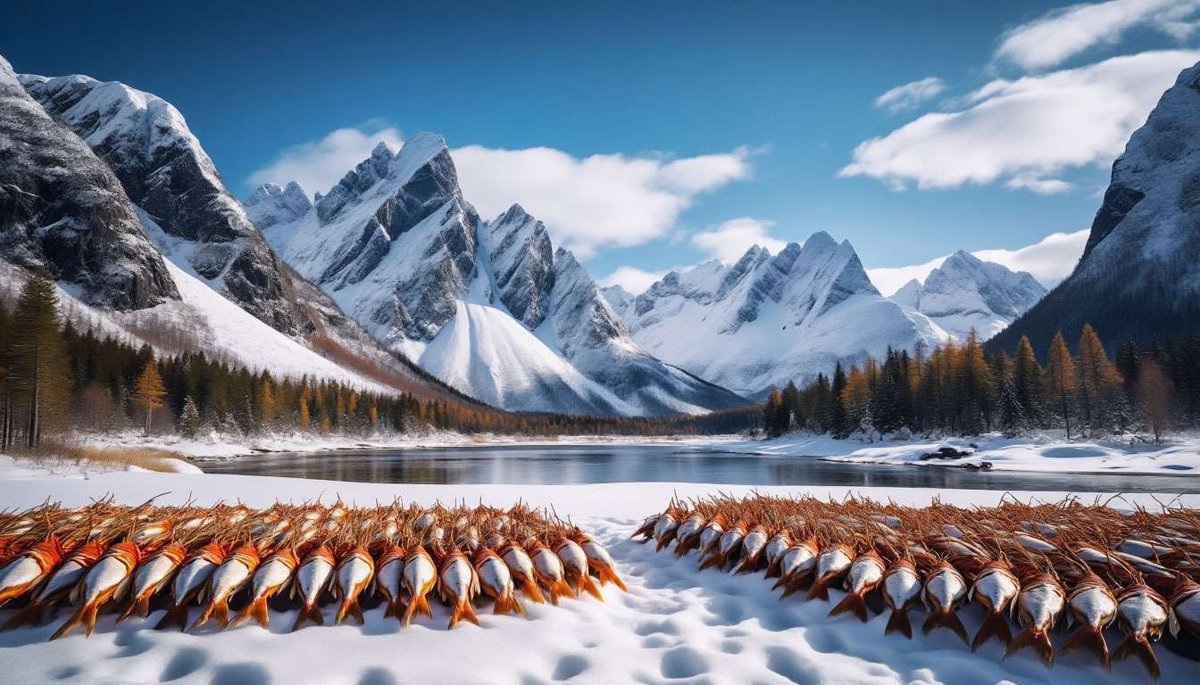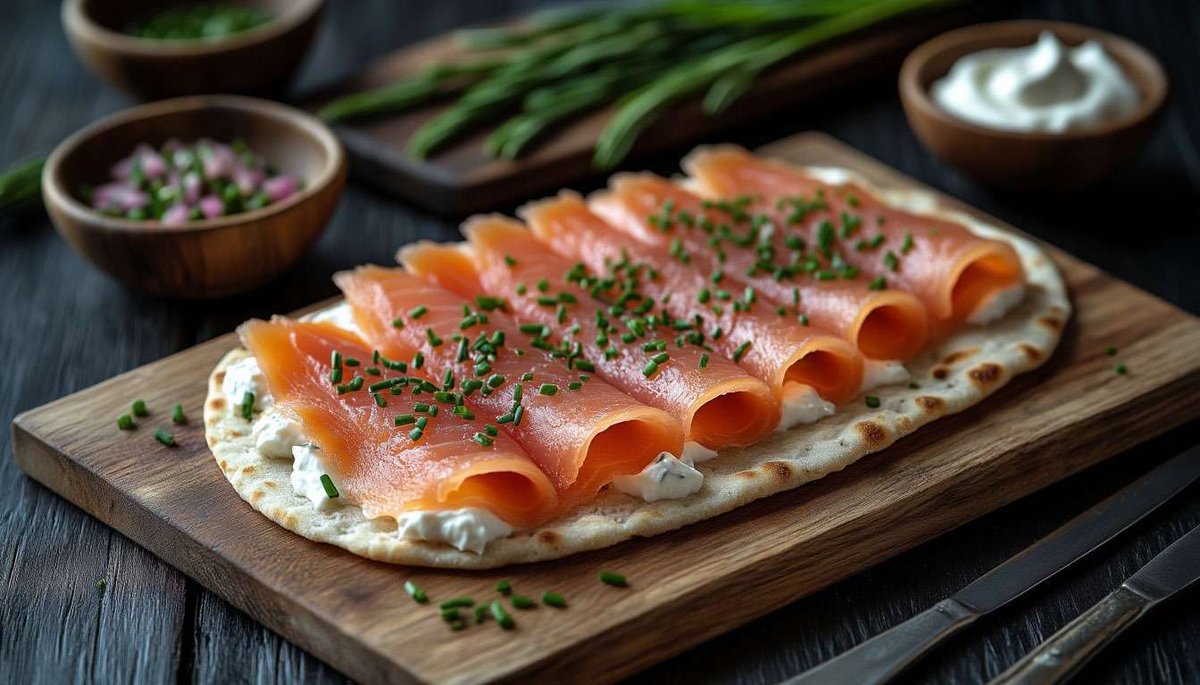From Gravlaks to Stockfish: how Norwegians brought the sea into winter and created iconic fish delicacies
Long before refrigerators, Norwegians knew how to "pack" the sea for winter: they hung cod in the fjord winds, buried salmon in sand with dill, and fermented trout in vats. Today, these methods have survived climatic difficulties and become the country's gastronomic calling cards. Let's take a look at the main "fish trio" — Gravlaks, Stockfish and Rakfisk — and add to them the modern king of the northern breakfast — cold smoked salmon.
What is Gravlaks and where does the "buried" name come from?
Grav means "pit" in Norwegian. Medieval fishermen on the coast of Nordland salted salmon, hid it in pits dug on the shore and weighed it down with stones. Without oxygen and at low temperatures, a gentle fermentation process began, bringing out the sweetness of the fish. The modern recipe: salmon fillets are rubbed with a mixture of salt (2 parts), sugar (1 part) and chopped dill, aquavit is added to taste, and the fillets are pressed for 48 hours at +4°C, turning every 12 hours.

How does Stockfish differ from dried cod "klippfisk"?
Stockfish is unsalted cod dried in the cold Lofoten wind (February–April). The fish is hung on wooden frames called hjell, where the temperature is between -1 and +5 °C and there is a constant draught. Over 3–4 months, the moisture evaporates to 15%, the protein concentrates and the taste becomes umami and chewy. Klippfisk is first heavily salted, then dried with hot air. Stockfish requires soaking for three days and is popular in the Italian dish baccalà alla vicentina — proof of how Norway has become part of Mediterranean cuisine.

Rakfisk — a delicacy or a gastronomic challenge?
Rakfisk is trout salted for 4–12 months in airtight vats at +2°C. Lactic acid fermentation breaks down the tissue, giving it a pungent ammonia smell and a spicy, cheesy taste. It is served thinly sliced on flatbrød with sour cream, onions and dill. The best chance to try this dish is at the Rakfiskfestivalen (Valdres, November). For beginners, choose the mild category (4 months), vellagret (12 months) is only for the brave.

Why is Norwegian cold-smoked salmon considered the gold standard?
The smoking temperature is +18°C, the smoking time is 10–12 hours, and the wood used is alder or beech with juniper twigs added. The salmon is dry-salted for 4 hours (3% salt) and then rinsed. The cold process preserves the delicate texture and omega-3. The taste is clean, slightly sweet. The best brands are Lerøy Aurora (Tromsø) and Lofoten Seafood. At Mathallen Oslo, 200 g costs ~119 NOK.
Recipe: classic sauce for Gravlaks (5 minutes)
- 2 tablespoons Dijon mustard
- 1 tablespoon Lynghonning honey
- 1 teaspoon cider vinegar
- 3 tbsp rapeseed oil
- 2 tablespoons finely chopped dill
Mix the mustard, honey and vinegar, then slowly whisk in the oil until emulsified and add the dill. Serve with thin slices of Gravlaks on knekkebrød.
Where can you buy and try these delicacies?
| Delicacy | Best region/event | Market/restaurant | Price |
|---|---|---|---|
| Gravlaks | All over the country, all year round | Fiskeriet (Oslo) | 89 NOK/200 g |
| Stockfish | Lofoten, Feb–Apr | Tørrfiskloftet (Henningsvær) | 149 NOK/piece 400 g |
| Rakfisk | Valtres, November | Rakfisk Festival, "Mild" | 110 NOK/200 g |
| Smoked salmon | Bergen/Tromsø | Fish Me (Bergen) | 119 NOK/200 g |
Drying in the icy wind, marinating underground or letting bacteria run wild in a barrel – Norwegians have turned the necessity of winter preparations into a culinary art form. Try sweet and salty Gravlaks on crispbread, steam a piece of Stockfish in tomato sauce, dare to try Rakfisk with a glass of aquavit, and enjoy the subtle smokiness of cold salmon for breakfast. Each technique is a story of survival and taste, bringing the sea to your plate.





2 comments
Log in to leave a comment